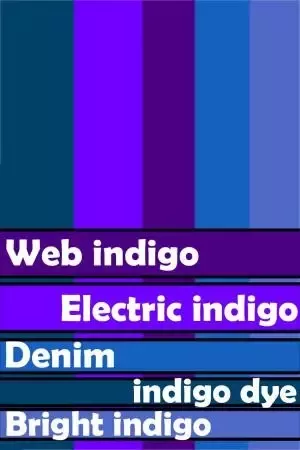Exploring Traditional Techniques of Custom Dyeing with Japanese Indigo
Custom Dyeing with Japanese Indigo
Indigo dyeing is a timeless craft that has adorned textiles for centuries, and among its many variants, Japanese indigo stands out for its rich history and vibrant hues. The practice of custom dyeing with Japanese indigo offers not only a creative outlet but also a deep connection to cultural traditions and sustainable practices. This article explores the fascinating world of Japanese indigo dyeing, its significance, techniques, and how individuals can engage in this ancient art form.
The History of Japanese Indigo
The roots of indigo dyeing in Japan can be traced back to the Heian period (794-1185), where it began to flourish as a prominent textile art. The Japanese cultivated their indigo plants, primarily *Polygonum tinctorium*, which produced a distinctive blue color that was both durable and vibrant. Over the centuries, indigo became a valued commodity, used in the production of traditional garments such as kimono and yukata, as well as household items like futons and noren (fabric dividers).
Japanese indigo dyeing is not just about the color; it embodies a philosophy of respect for nature and craftsmanship. The intricate processes involved in planting, harvesting, fermenting, and dyeing highlight the meticulous care and knowledge passed down through generations.
The Art of Custom Dyeing
Custom dyeing with Japanese indigo allows artisans and enthusiasts to create unique, personalized pieces that reflect their individual style. The basic technique involves a few essential steps preparing the dye, dyeing the fabric, and finishing the textile.
1. Preparing the Dye The indigo leaves are harvested and fermented to create a natural dye bath. The fermentation process is critical, as it transforms the indigo leaves into a soluble form that can adhere to fabric. This essential step requires expertise and patience, as artisans must monitor the temperature and timing to achieve the desired dye strength.
custom dyeing with japanese indigo

2. Dyeing the Fabric Once the dye bath is ready, the fabric—often made of cotton or linen—is dipped into the indigo solution. The initial dip yields a light hue, but repeating the dipping process builds up the color. As the fabric comes into contact with air, the indigo oxidizes, developing into the beautiful blue shades characteristic of Japanese indigo. Each dip can produce varying shades, allowing artists to create gradients or patterns based on their preferences.
3. Finishing Touches After dyeing, the fabric is rinsed and dried. Additionally, artisans often use techniques like Shibori, a traditional Japanese tie-dye method, to create intricate designs and textures. This technique involves folding, twisting, or bunching the fabric and binding it before dyeing. The result is a stunning interplay of indigo and white that is both eye-catching and deeply personal.
Sustainability and Community
One of the most beautiful aspects of custom dyeing with Japanese indigo is its connection to sustainability. The use of natural dyes reduces the environmental impact associated with synthetic dyes, which can be harmful to both ecosystems and human health. Furthermore, the cultivation of indigo plants promotes biodiversity and supports local farmers who rely on traditional agricultural practices.
Engaging in this craft also fosters community. Many artisans participate in workshops or classes where they share techniques and knowledge, bringing together individuals who appreciate the beauty of handmade textiles. These gatherings not only promote skill development but also create a vibrant social network centered around art and culture.
Conclusion
Custom dyeing with Japanese indigo is more than just a method of fabric alteration; it is a profound expression of creativity, sustainability, and cultural heritage. By embracing this ancient practice, individuals can create personalized textiles that tell their own stories while honoring the rich traditions of Japanese indigo dyeing. As interest in sustainable fashion grows, techniques like these remind us that the beauty found in craftsmanship and natural materials can lead to environmentally friendly choices that resonate across generations. Whether you are a seasoned artisan or a curious novice, exploring the world of Japanese indigo opens up a palette of possibilities limited only by your imagination.
-
Sulphur Black Dyes in Daily Use
NewsMay.07,2025
-
Indigo Dyeing for Daily Life
NewsMay.07,2025
-
Indigo Dye Production and Its Growing Demand
NewsMay.07,2025
-
Color That Lasts
NewsMay.07,2025
-
Bromo Indigo for Modern Use
NewsMay.07,2025
-
Blue From Nature
NewsMay.07,2025
-
The Timeless Color in Fashion and Textiles
NewsApr.10,2025

Sulphur Black
1.Name: sulphur black; Sulfur Black; Sulphur Black 1;
2.Structure formula:
3.Molecule formula: C6H4N2O5
4.CAS No.: 1326-82-5
5.HS code: 32041911
6.Product specification:Appearance:black phosphorus flakes; black liquid

Bromo Indigo; Vat Bromo-Indigo; C.I.Vat Blue 5
1.Name: Bromo indigo; Vat bromo-indigo; C.I.Vat blue 5;
2.Structure formula:
3.Molecule formula: C16H6Br4N2O2
4.CAS No.: 2475-31-2
5.HS code: 3204151000 6.Major usage and instruction: Be mainly used to dye cotton fabrics.

Indigo Blue Vat Blue
1.Name: indigo blue,vat blue 1,
2.Structure formula:
3.Molecule formula: C16H10N2O2
4.. CAS No.: 482-89-3
5.Molecule weight: 262.62
6.HS code: 3204151000
7.Major usage and instruction: Be mainly used to dye cotton fabrics.

